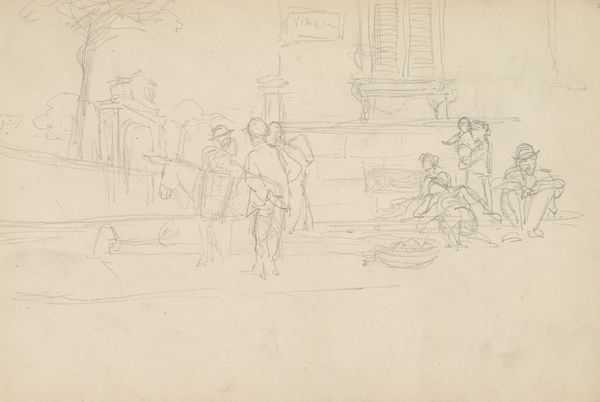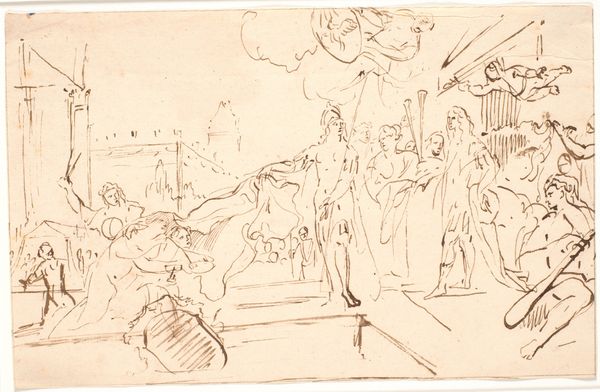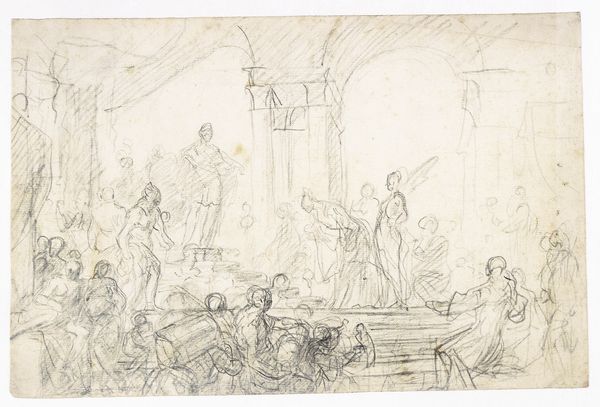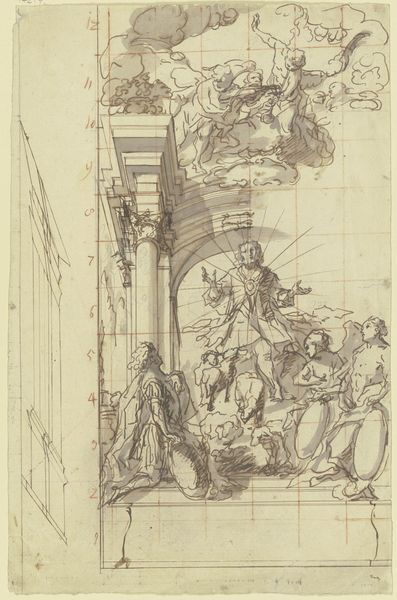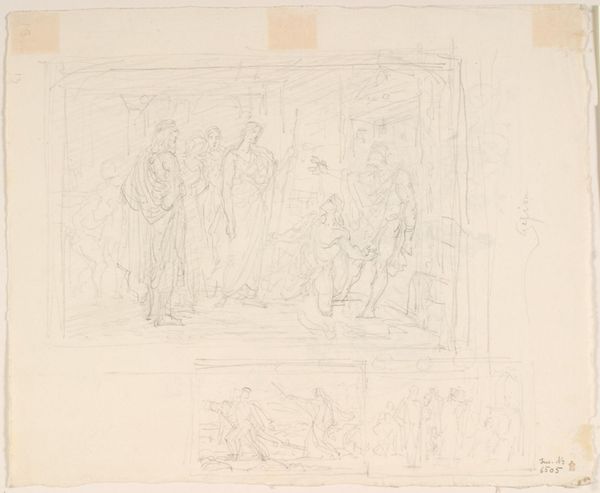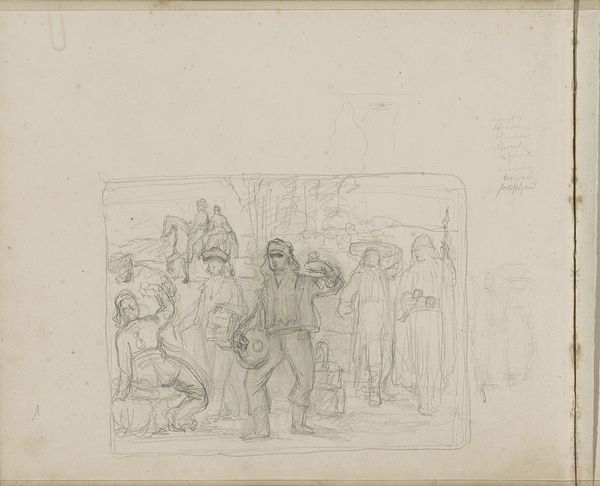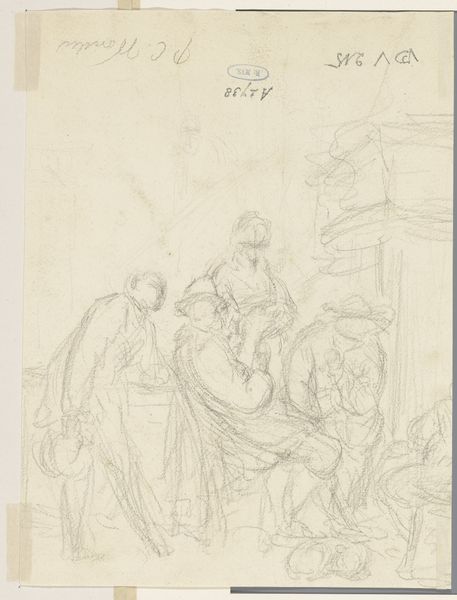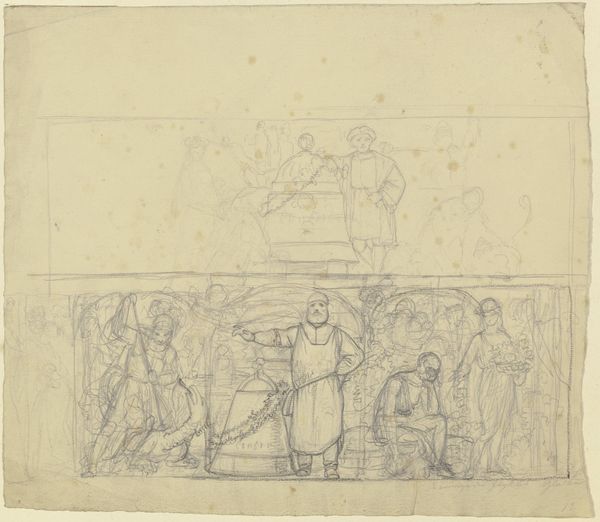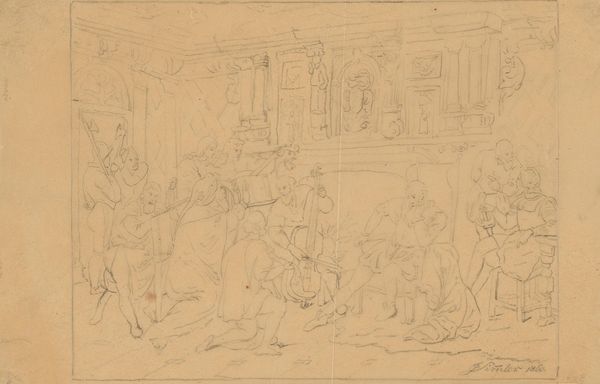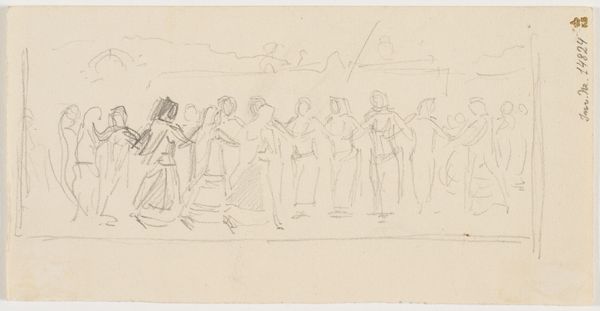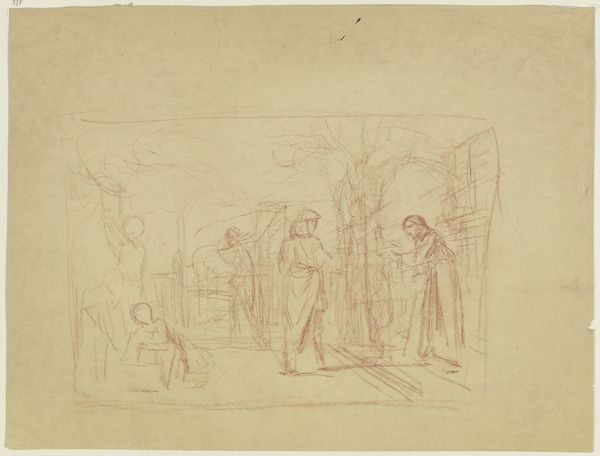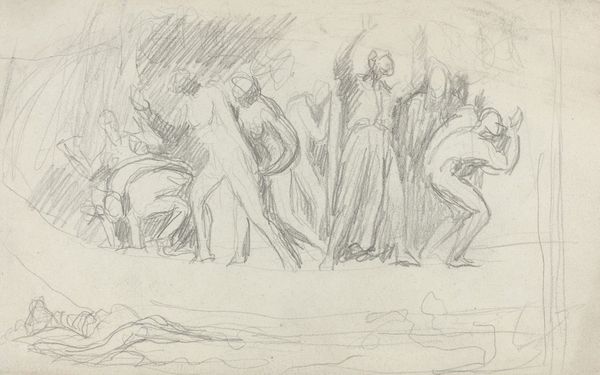
drawing, pencil
#
drawing
#
landscape
#
classical-realism
#
figuration
#
pencil
#
history-painting
#
academic-art
#
realism
Copyright: Public Domain: Artvee
Curator: Here we have a pencil sketch by Henryk Siemiradzki from 1889, titled "Study for Phryne at the Festival of Poseidon in Eleusis." It depicts a preparatory idea for a much larger painting. Editor: My initial impression is of muted drama. The figures are suggested rather than fully formed, and there’s a sense of anticipation despite the stillness. The gray lines seem to almost whisper the intensity of the scene. Curator: Siemiradzki, as a key figure in academic art, often turned to historical themes, and this preliminary sketch beautifully illustrates that interest. The composition seems classically organized, with careful attention given to balance despite it being a sketch. The temple architecture on either side frames a staged, almost theatrical scene. Editor: Indeed, that staging, the elevation of Phryne within this architecture, highlights her symbolic importance. She's placed on a pedestal of sorts, surrounded by onlookers, which creates a dynamic of power and vulnerability, perhaps reflecting ancient beauty standards or even legal dilemmas. The name Phryne connects us to an Athenian hetaira famous for her beauty, her story used to argue an obscenity case when she was revealed to the court to have been divine in form. Curator: Precisely. One sees here how Siemiradzki uses classical realism to not only depict but also interpret historical narratives. Note the economy of lines, which manage to define not only shapes but also subtle gestures and postures of the figures. There’s a tension created by the incomplete nature of the sketch; it teases the imagination to fill in the blanks and interpret the untold aspects of this ancient ritual. Editor: Looking closer, I observe how the light seems concentrated around Phryne and diminishes toward the peripherals. She becomes the focal point, the subject of contemplation but also of potential judgment within this assembly. In that sense, the artist is perhaps exploring cultural anxieties surrounding female power, objectification, and spectacle. Curator: Absolutely, the formal composition supports and elevates this iconic character into a timeless symbol. Siemiradzki masters creating this historical setting, transporting viewers to another world, allowing for deep reflection. Editor: This sketch offers us an insight into how a cultural memory—the story of Phryne—was processed through 19th-century artistic sensibilities, revealing that images don't merely reflect but also construct how we perceive the past and present.
Comments
No comments
Be the first to comment and join the conversation on the ultimate creative platform.
